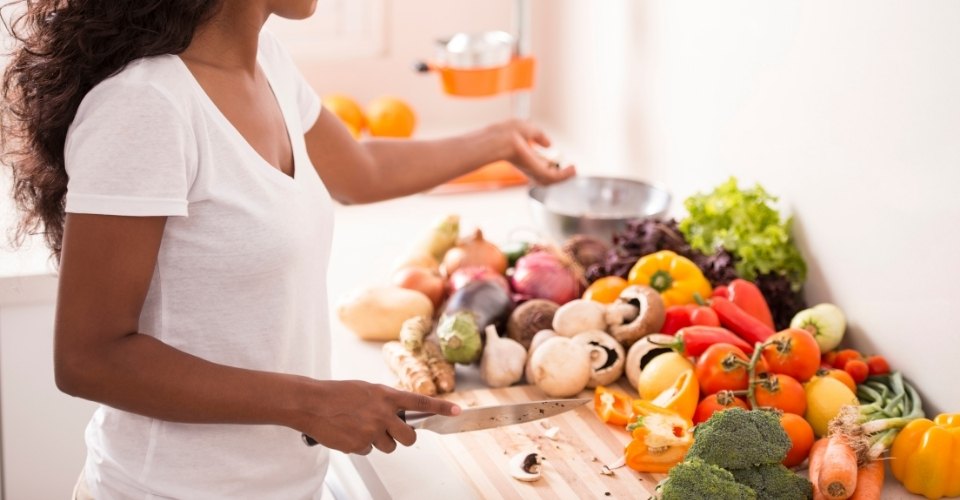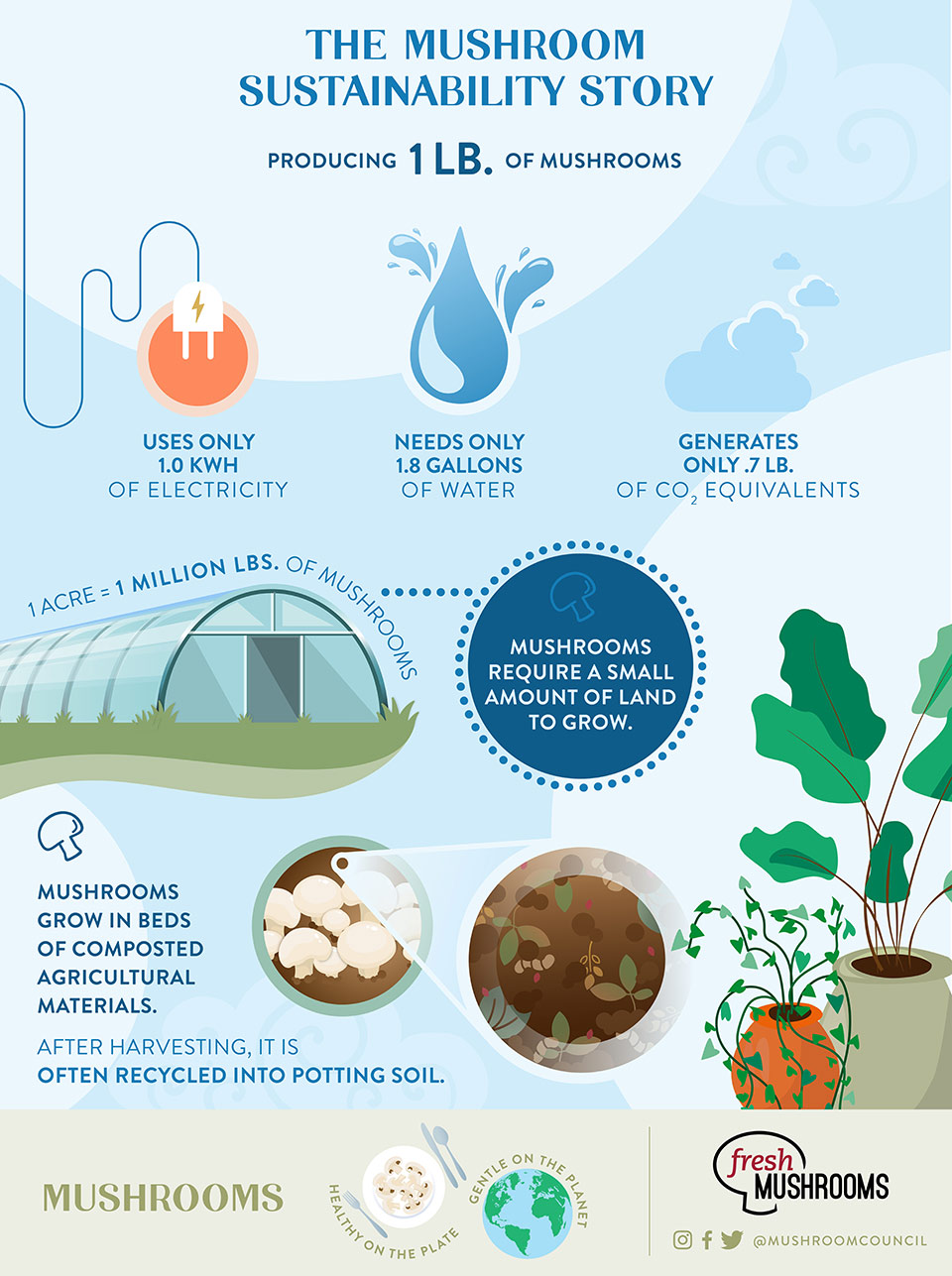In today’s food-centric world, decisions are based on many factors such as health and nutrition, appeal, and affordability, but you might find yourself using one more guideline to determine how you spend your food dollars – sustainability.
You might find yourself becoming increasingly curious about where and how your food is produced and what impact it has on the environment; and for good reason, the world’s population is rapidly expanding, and it is estimated there will be over 9 billion people on the planet by 20501.
The lines between health and sustainability are beginning to blur – a healthy diet should include food choices that respect future accessibility to nutritious food and overall global health. It’s becoming more and more important to make sustainable and healthy food choices, for you and the world.

5 Ways to Eat More Sustainably
- Choose a variety of plant-based foods.
The higher the demand for fruits and vegetables, the higher the supply and the more diversified the farm landscape. Plant-based choices are beneficial not only for health but also for the environment. Add an extra serving of vegetables, like mushrooms, to your day or try one “meatless” dinner each week. - Look for local.
Local foods found at your farmer’s market or grocery stores tend to be fresher, more flavorful, more nutritious and often times, more cost-efficient. Plus, spending food dollars on local produce helps to support farmers and your community. - Reduce meat consumption with The Blend.
The 2015-2020 Dietary Guidelines for Americans encourage healthy eating patterns that are low in saturated fat and sodium and high in a variety of vegetables2. If you are interested in reducing meat consumption, try The Blend, a nutritious and sustainable option that replaces a portion of meat with mushrooms to improve the flavor and nutrition of favorite recipes like burgers, meatballs and tacos.3 - Eat mindfully.
In the U.S., food waste is estimated at 30-40% of the food supply. In 2010, this translated to 133 billion pounds and $161 billion worth of food. This waste, which is the largest component making up municipal landfills, has negative implications on the environment.4 Want to reduce your food waste at home? Try repurposing or freezing leftovers or eating more mindfully. By slowly savoring food and tuning in to feelings of hunger and fullness, you may realize you can refine your portion sizes and purchase less. Mindful eating can also help honor your food, where it came from and the people who produced it, cultivating gratitude and appreciation for our food system and the environment. - Choose mushrooms.
The mighty mushroom not only is healthy on the plate, it’s also gentle on the planet – according to a new study measuring the water, energy and carbon emissions required to grow and harvest fresh mushrooms in the United States. The Mushroom Sustainability Story: Water, Energy and Climate Environmental Metrics study finds production of a pound of mushrooms requires only 1.8 gallons of water and 1.0 kilowatt-hours of energy and generates only .7 pounds of CO2 equivalent emissions. In addition, the annual average yield of mushrooms is 7.1 pounds per square foot – meaning up to 1 million pounds of mushrooms can be produced on just one acre.5

5 Ways To Add Mushrooms to Your Plate
Eating sustainably with mushrooms has never been easier. Thanks to mushrooms’ versatility, you can eat healthy on the plate and gentle on the planet for breakfast, lunch and dinner. Here are 5 ways you can add mushrooms to your diet.
- Add mushrooms to your morning. Try a mushroom and egg scramble for a boost of umami flavor with a hot cup of our ENERGIZE Cordyceps Mushroom Coffee!
- Take your toast to the next level with mushroom toast for a snack (yes, it’s as simple as it sounds – sautéed mushrooms + herbs + toast!).
- Make a Blend burger! Replace 30% of meat with mushrooms for a moist burger that’s lower in calories, saturated fat and sodium4.
- Try mushroom fajitas! Use slices of sautéed mini bella mushrooms to add meaty texture and flavor to the dish.
- Make a mushroom Bolognese! Chop mushrooms finely to match the consistency of ground beef and add to tomato sauce for a satisfying pasta dish.
How Our Mushrooms Are Responsibly Grown
From a healthy base to fair and equitable treatment of our employees, South Mill Champs is committed to responsibly growing mushrooms, from start to finish. To learn more about our sustainability practices head to our Sustainable Mushroom Growing.
REFERENCES:
1) Food and Agriculture Organization of the United Nations. Dietary Guidelines and Sustainability. http://www.fao.org/nutrition/education/food-dietary-guidelines/background/sustainable-dietary-guidelines/en/. 2) U.S. Department of Health and Human Services and U.S. Department of Agriculture. 2015–2020 Dietary Guidelines for Americans. 8th Edition. December 2015. Available at http://health.gov/dietaryguidelines/2015/guidelines/. 3) Myrdal Miller, A., Mills, K., Wong, T., Drescher, G., Lee, S.M., Sirimuangmoon, C., Schaefer, S., Langstaff, S., Minor, B. and Guinard, J.-X. (2014), Flavor-Enhancing Properties of Mushrooms in Meat-Based Dishes in Which Sodium Has Been Reduced and Meat Has Been Partially Substituted with Mushrooms. Journal of Food Science, 79: S1795–S1804. 4) United States Department of Agriculture. Office of the Chief Economist. Frequently Asked Questions. How much food waste is there in the United States and why does it matter? https://www.usda.gov/oce/foodwaste/faqs.htm. 5) The Mushroom Sustainability Story: Water, Energy, and Climate Environmental Metrics, 2017 Report.
